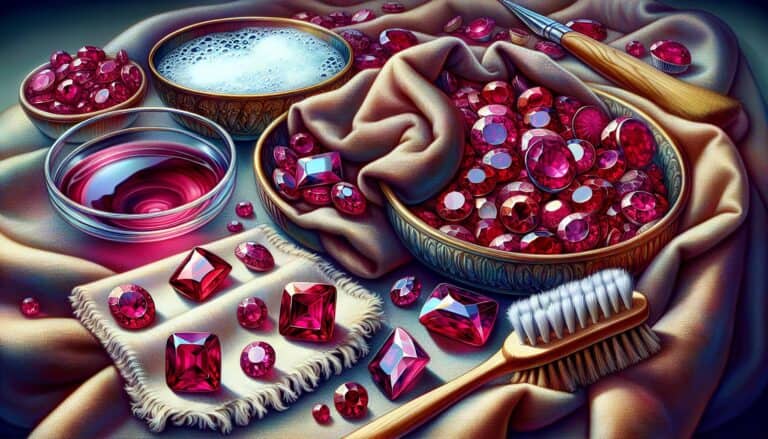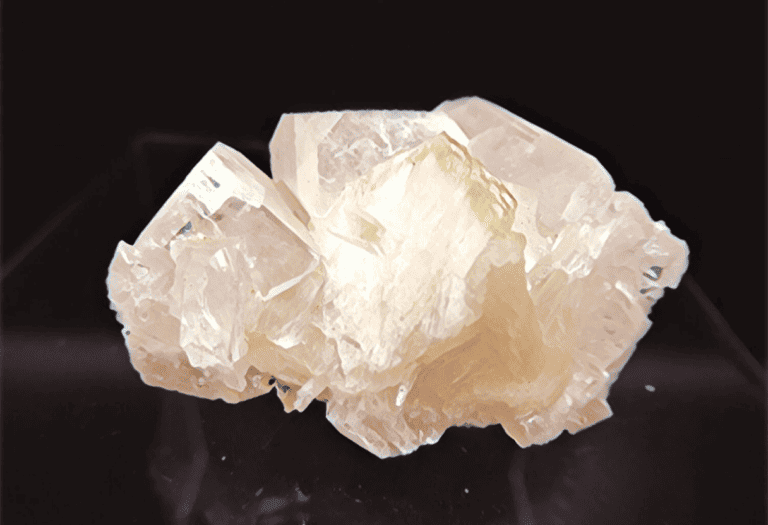Ever wondered about the value of that shiny, metallic-looking stone called hematite?
You’re not alone. Hematite is a popular mineral known for its mirror-like luster and its use in jewelry and healing practices. But what’s it really worth?
Determining the value of hematite isn’t as straightforward as you might think. It depends on various factors, from quality and size to the cut and finish of the stone.
Let’s dive into the world of hematite and uncover what makes this iron-rich gemstone both accessible and valuable.
Hematite’s value is influenced by color, clarity, size, origin, and market demand. The most prized hematite showcases a deep, metallic luster. Larger, high-quality specimens, especially from renowned locations like Brazil or Arizona, command higher prices. Its use in jewelry and historical significance also affect its worth.
What Is Hematite?
Hematite is an iron oxide mineral with a rich, metallic luster that often earns it a top spot in collectors’ cabinets and jewelry designs. As one of the most abundant minerals in the Earth’s crust, hematite forms in a variety of environments, from sedimentary deposits to volcanic rocks.
Renowned for its deep, steel-gray to black color, hematite is not just pretty to look at; it’s also packed with a high iron content, making it an important ore for iron extraction. The name ‘hematite’ is derived from the Greek word for blood, ‘haima,’ alluding to the mineral’s reddish streak seen when ground to a powder.
In the realm of metaphysical properties, hematite holds a revered place. Believed to ground and protect, it’s said to strengthen one’s connection with the earth, providing a sense of safety and courage.
When considering hematite for purchase, you might encounter terms such as “specular hematite,” which boasts a sparkling, mirror-like appearance, and “earthy hematite,” that exhibits a more subdued, matte finish. Each type bears its own unique appeal and may command different prices in the market.
Given its versatility, hematite is fashioned into various products. Beyond simple tumbled stones, hematite is sculpted into:
- Beads and cabochons for jewelry
- Small statues or figurines
- Polished tiles for architectural purposes
Your fascination with hematite might take you through paths of aesthetic appreciation, or you might delve into its utilitarian aspects. Either way, the value you find in this mineral will extend beyond its dollar worth, contributing to its enduring presence in both the geological and cultural spheres.
Hematite Prices: Factors That Affect Value
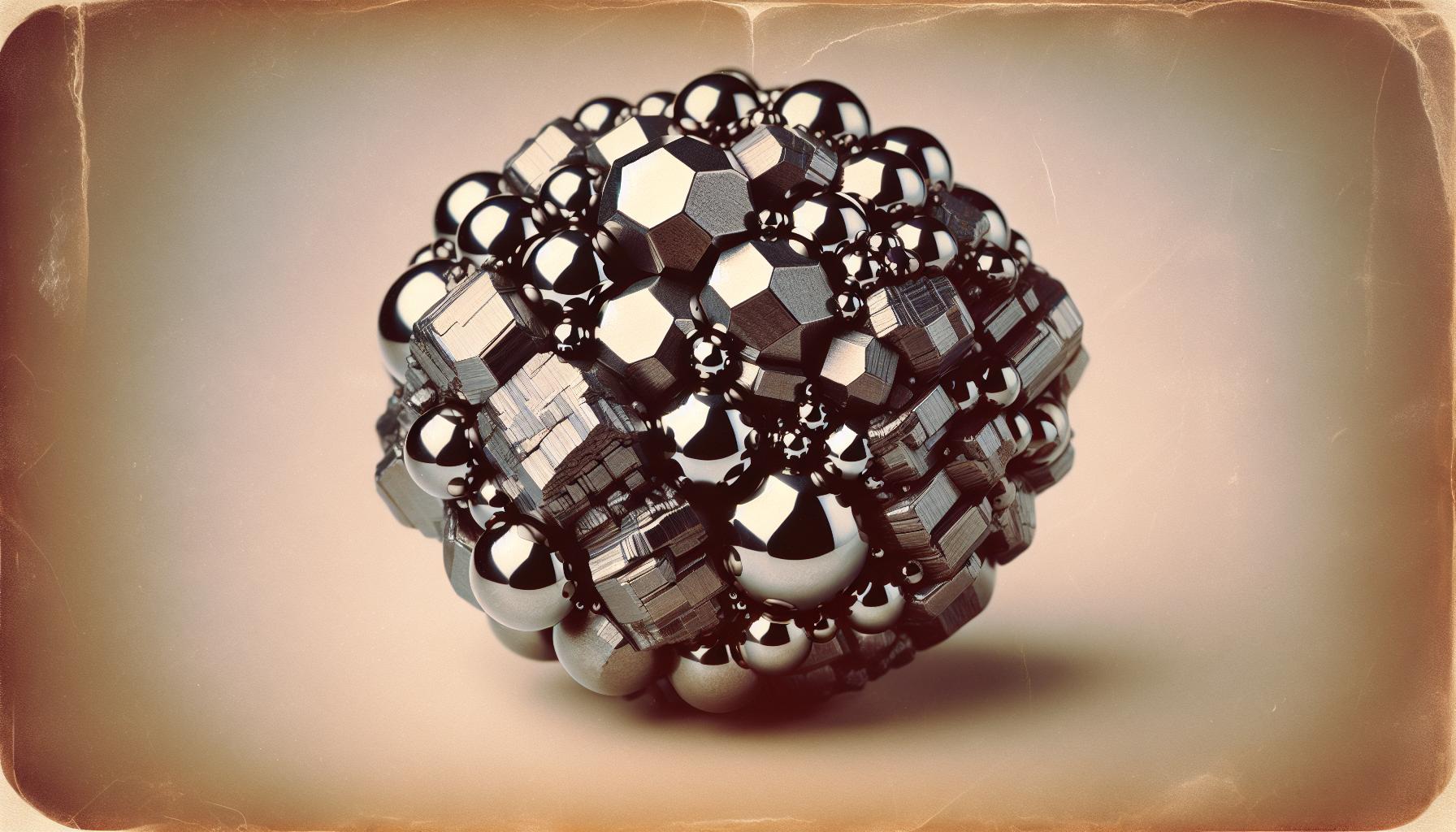
Color, Clarity, and Cut Quality
When assessing hematite value, consider these three critical aspects.
- Color: Hematite’s color ranges from metallic gray to black, and vivid, consistent hues often fetch higher prices. Variations like red streaks can either enhance or detract from value, contingent upon market trends and collector interest.
- Clarity: Unlike transparent gems, clarity in hematite refers to the lack of inclusions that affect its lustrous appearance. The finer and more mirror-like the surface, the more desirable the specimen.
- Cut Quality: Hematite’s cut can enhance its metallic luster and impact its appeal. Expertly faceted hematite jewelry, for instance, can command higher prices due to the skill required to achieve a polished finish without chipping the mineral.
Market Demand and Availability
Market forces play a pivotal role in the valuation of hematite.
- Market Demand: Fashion trends can skyrocket the demand for certain minerals. Hematite, with its versatility and aesthetic appeal, often sees fluctuations in price corresponding with its popularity in jewelry and décor.
- Availability: Hematite is relatively abundant, but the finest quality pieces are rarer and thus more valuable. Locations known for their exceptional hematite—such as Elba Island in Italy—produce specimens that are highly sought after, affecting overall market value.
Keep an eye on how these factors sway hematite prices. As designers and collectors vie for high-quality pieces, you might find pricing to be a dynamic landscape reflective of hematite’s timeless allure.
Understanding Hematite: A Rare Gem

As you delve deeper into the world of gemstones, you’ll find hematite to be a unique and intriguing mineral. It’s known for its metallic luster and rich, iron-based composition that sets it apart in the gem market. Despite its widespread recognition, there’s much more to uncover about the rarity and origin of this remarkable stone.
The Rarity of Hematite
Hematite’s availability might lead you to believe it’s a common find. However, high-quality hematite suitable for jewelry is less common, which boosts its rarity in the market. The distinction lies in finding pieces that offer the best reflection of light—ones that really showcase its metallic sheen. These qualities are not always easy to come by.
- Hematite pieces with a smooth, even surface that can be polished to a high shine are particularly sought after.
- Specimens without blemishes or inclusions are rare and more valuable.
The prevalence of lower-grade hematite used for industrial purposes doesn’t diminish the value of fine-quality stones used in jewelry-making. This difference in quality is crucial when evaluating hematite’s worth and contributes to its rarity as a gemstone.
Origins and Characteristics
Hematite’s journey from the earth to your jewelry collection is fascinating. Geographically diverse, hematite deposits can be found around the world, from Brazil’s stunning mines to the Lake Superior region in the United States.
Each location offers hematite with distinctive features:
- Brazilian hematite is often bright and highly reflective.
- Lake Superior hematite typically presents as more of a matte finished appearance, but with striking natural patterns.
The characteristics that influence hematite’s value include:
- Color: Ranges from deep black to steel or silver-gray, and sometimes brown to reddish-brown.
- Streak: Always leaves a reddish streak, a signature trait.
- Hardness: On the Mohs scale, it falls around 5 to 6, making it suitable for various types of jewelry.
- Processing: How well the stone is extracted and prepared can affect its appearance and durability.
By understanding these origins and characteristics, you’re better equipped to appreciate the nuances that make hematite not just a stone, but a rare gem with an allure all its own.
Hematite Grading and Valuation
The Grading System for Hematite
When you’re looking into the value of hematite, understanding the grading system is crucial. Though not as stringent as the grading for diamonds, hematite also undergoes a rigorous examination process to dictate its market value. Luster, size, shape, and surface quality are primary factors that contribute to hematite’s grade. The most sought-after pieces exhibit a metallic sheen, uniform color, and minimal surface imperfections, such as pits or scratches.
In terms of luster, the shinier the stone, the higher its value tends to be. Size plays a significant role as well; larger hematite stones, which are less common, fetch higher prices. The shape of the stone can influence its worth, too. Regular, symmetrical shapes are often more desirable than irregular ones. Finally, the surface quality can elevate or diminish the stone’s value. Premium-grade hematite boasts a smooth, unblemished surface, enhancing its appeal and price tag.
Certification and Appraisal
When it’s time to assess the financial worth of your hematite, acquiring a certification from a reputable gemological laboratory is a smart move. Certification assures that your hematite has been professionally evaluated, detailing its weight, dimensions, quality, and any treatments it may have undergone. This document plays a pivotal role in verifying the authenticity and quality of your gemstone, giving you leverage when you’re selling or insuring it.
In addition to certification, appraisal by a certified gemologist provides an estimated value based on current market conditions. Appraisers take into account factors like rarity, gemstone quality, and historical significance, especially for hematite with provable provenance. Remember, market values can fluctuate, so updated appraisals are essential if you’re holding hematite as an investment piece.
To safeguard your investment and ensure you’re well-informed about your hematite’s worth, always seek out certified professionals for grading and appraisal services. Their expertise will help you navigate the complexities of hematite valuation with confidence.
Current Market Trends in Hematite Pricing
When you’re exploring the hematite market, understanding current pricing trends is crucial. Hematite prices fluctuate depending on a variety of factors, including demand, market availability, and mining conditions. As of now, certain trends are noticeably shaping the landscape of hematite pricing.
High-quality Specimens and Jewelry: Artisanal products and fine jewelry featuring hematite often fetch higher prices. The aesthetic appeal, coupled with craftsmanship, can significantly boost the value. Whether set in sterling silver, gold, or fashioned into intricate designs, unique hematite pieces are trending among collectors and fashion enthusiasts.
Industrial Application: The bulk of hematite’s market value is still rooted in its industrial utility, specifically in the production of iron and steel. Changes in the iron ore market directly impact hematite prices. With global construction and manufacturing sectors experiencing variable growth rates, hematite’s industrial demand continues to ebb and flow, mirrored by its market value.
For a snapshot of recent pricing, here’s a quick glance at rough and refined hematite costs:
| Type | Average Price Range (per kilogram) |
|---|---|
| Rough Hematite | $0.50 – $3.00 |
| Polished Hematite | $1.00 – $5.00 |
| Hematite Jewelry | $10.00 – $200.00+ |
Marketplaces and Online Platforms: The rise of online shopping has also impacted hematite pricing. Digital platforms often offer a wider variety of hematite, from raw stones to finished products, sometimes at more competitive prices. However, with online purchasing, it’s especially important to verify the source to ensure that you’re getting what you pay for.
It’s worth noting that market prices are also influenced by geopolitical events and trade policies which affect mining operations and export-import regulations. Keeping an eye on these developments can give you insight into potential price shifts in the hematite market.
Remember, whether you’re a collector or investor, staying informed about these trends will help you make educated decisions when assessing hematite’s worth. Always consult with certified professionals and use accredited sources to verify your information and ensure a sound investment.
The Most Expensive Hematite
When you’re exploring the hematite market, you may come across pieces with significantly higher price tags than others. Expensive hematite generally falls into two categories: gem-quality stones and historic artifacts.
High-grade gem-quality hematite is valued for its metallic luster and high iron content. These specimens are often cut and polished to create stunning jewelry pieces. The most expensive hematite of this kind features:
- Exceptional mirror-like luster
- Smooth surface with minimal imperfections
- Rich, consistent color with no visible inclusions
- Craftsmanship in cutting and polishing
The size of the stone also contributes to its value. Larger, well-cut stones can fetch premium prices. Rarity is another key factor. Hematite with unique qualities or origins, such as those found in limited deposits or those with historical significance, may command higher prices.
Historic hematite artifacts come with a different set of valuation standards. Pieces with a verifiable provenance, such as those belonging to ancient civilizations or those used in significant historical events, are highly sought after. The condition of these artifacts is crucial, and pristine pieces are rare. Here’s what collectors look for in historic hematite:
- Documented provenance
- Exceptional condition given their age
- Significance in historical context
- Rarity and uniqueness of the artifact
Museum-quality hematite artifacts have been known to reach astonishing figures at auctions and private sales. They not only attract mineral collectors but also those interested in history and archeology.
To give you an idea of potential prices, here are some sample figures for top-tier hematite items:
| Type | Price Range |
|---|---|
| Flawless gem-quality hematite | $100 – $500 per carat |
| Large polished hematite sculptures | $1,000 – $5,000 |
| Historic hematite artifacts | $5,000 – $100,000+ |
Remember, when considering the purchase of any high-value hematite piece, a proper certification and appraisal from certified professionals should be non-negotiable. They not only assure you of the hematite’s authenticity but also provide an accurate estimate of its value in the current market.
Keep these figures and factors in mind as you explore the vibrant and diverse world of hematite, where beauty and history often intersect to define worth.
Buying Hematite: Tips and Recommendations
Where to Purchase High-Quality Hematite
When you’re in the market for hematite, it’s crucial to identify reputable sources. High-quality hematite is usually available at:
- Specialty Gemstone Stores: Here, you’re likely to encounter a range of hematite from loose stones to crafted jewelry. The advantage is the expert advice you can receive on-site.
- Gem and Mineral Shows: These events bring a plethora of sellers together, giving you the chance to compare different qualities and prices in one location.
- Online Marketplaces: Websites dedicated to minerals or platforms like Etsy and eBay offer a variety of hematite pieces. Ensure you read reviews and check ratings before making a purchase.
- Direct from Mines or Miners: Purchasing hematite straight from the source can not only provide you with a story to tell about your stone but also often ensures a better price. Be cautious, however, that you validate the authenticity of the source.
Quality is paramount, and while larger pieces often fetch higher prices, the intensity of color and sheen can dramatically affect hematite’s value. Always inquire about the origin of the stone and any treatments it has undergone, which could alter its worth.
Ensuring Authenticity and Value
When investing in hematite, verification of authenticity is a step you can’t skip. Here’s how you can protect yourself and your investment:
- Ask for Certification: Reliable vendors should provide a certificate of authenticity. This documentation is a testament to the hematite’s quality and legitimacy.
- Seek Professional Appraisal: Particularly for more significant investments, getting a professional opinion can safeguard against overpayment and fraud.
- Understand the Return Policy: Should you have doubts about your purchase after the fact, a fair return policy is your safety net.
- Use a Magnet Test: Hematite is naturally magnetic; conducting a simple magnet test can quickly hint at whether your hematite is genuine.
Bear in mind that the price of hematite can fluctuate based on market demand, rarity, and aesthetic qualities like luster and craftsmanship. Always do your research or consult with an expert to get a solid understanding of current market conditions before finalizing any deals. Remember, knowledge is your best tool when it comes to purchasing hematite – it helps you make an informed decision and ensures that you’re getting the best value for your money.
Conclusion: Buying & Selling Hematite
Armed with the right knowledge and resources you’re now equipped to navigate the hematite market.
Remember to buy from reputable sources and verify authenticity to ensure you’re getting what you pay for. Don’t hesitate to seek professional advice or an appraisal to truly understand the value of the piece you’re interested in. With these strategies in hand you’ll be able to make an informed purchase that reflects both the geological and market worth of hematite.
Whether for its aesthetic appeal or its metaphysical properties your investment in hematite can now be as solid as the stone itself.

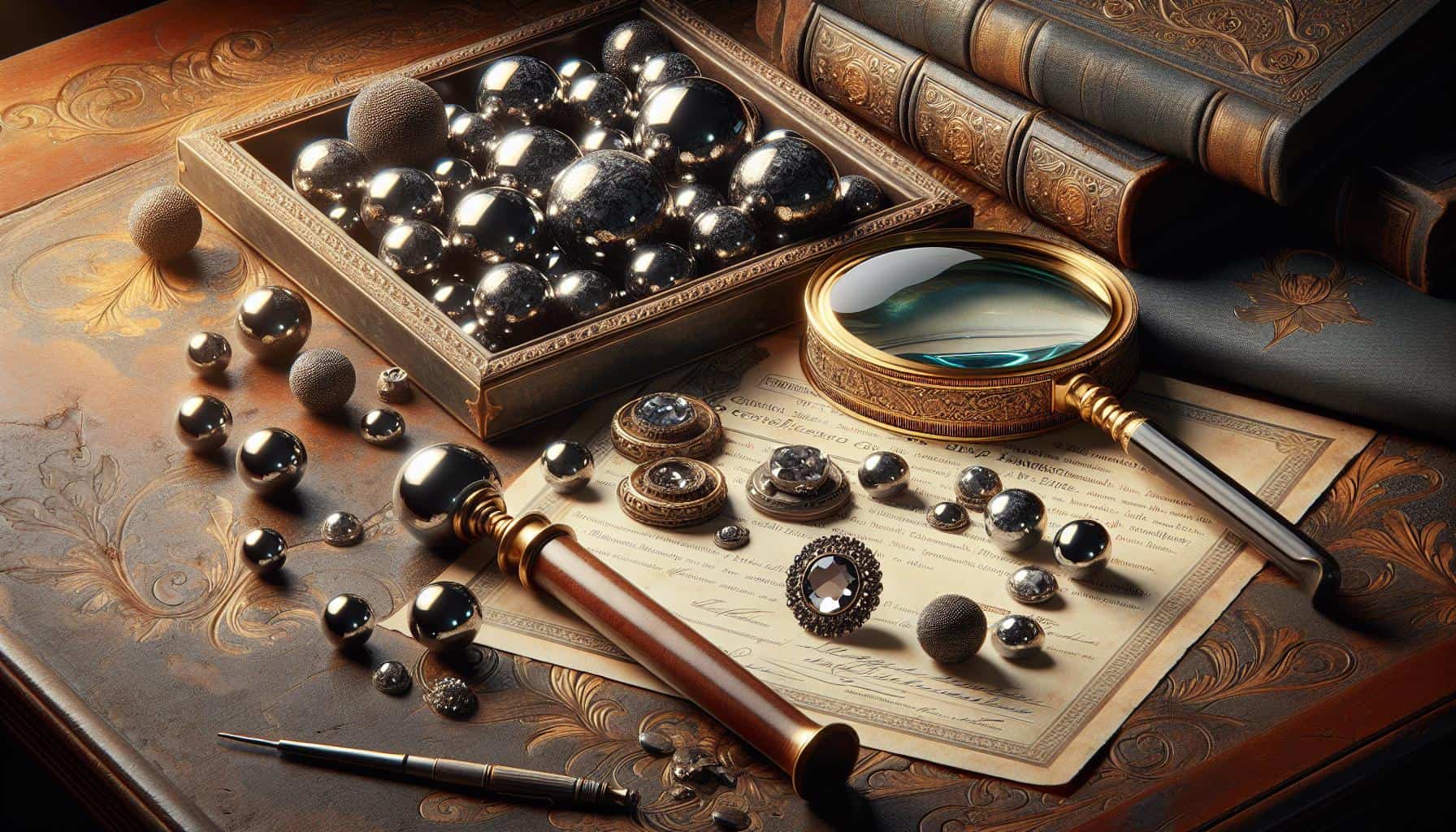
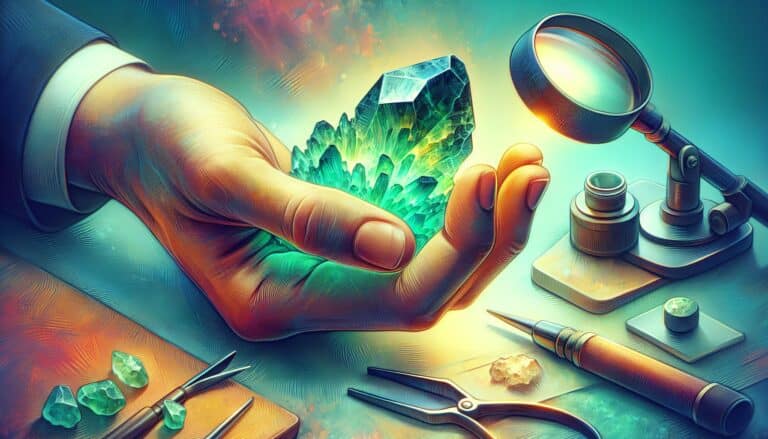
![Texas Rockhounding Sites in [year]: What You’ll Discover & Where](https://observationhobbies.com/wp-content/uploads/2024/01/MZHIzqyqCDorVgqMLNsPb-768x439.jpg)
